Although not commonly associated with Wisconsin, Pelicans occasionally appear in the state, adding a unique touch to its diverse wildlife.
Wisconsin, renowned for its picturesque landscapes and abundant natural beauty, is home to various bird species.
The American White Pelican is an occasional visitor, gracing the state’s lakes and waterways with its majestic presence.
With their distinctive white plumage and an impressive wingspan, these large, graceful birds captivate onlookers when they venture into Wisconsin’s water bodies.
While not permanent residents, these pelicans are known to migrate through the region, offering residents and enthusiasts a rare opportunity to witness their elegant flight and communal behaviour.
The unexpected presence of pelicans in Wisconsin adds another dimension to the state’s rich tapestry of wildlife, surprising and delighting those who encounter these magnificent creatures in unexpected settings.
Common Features of Pelicans in Wisconsin
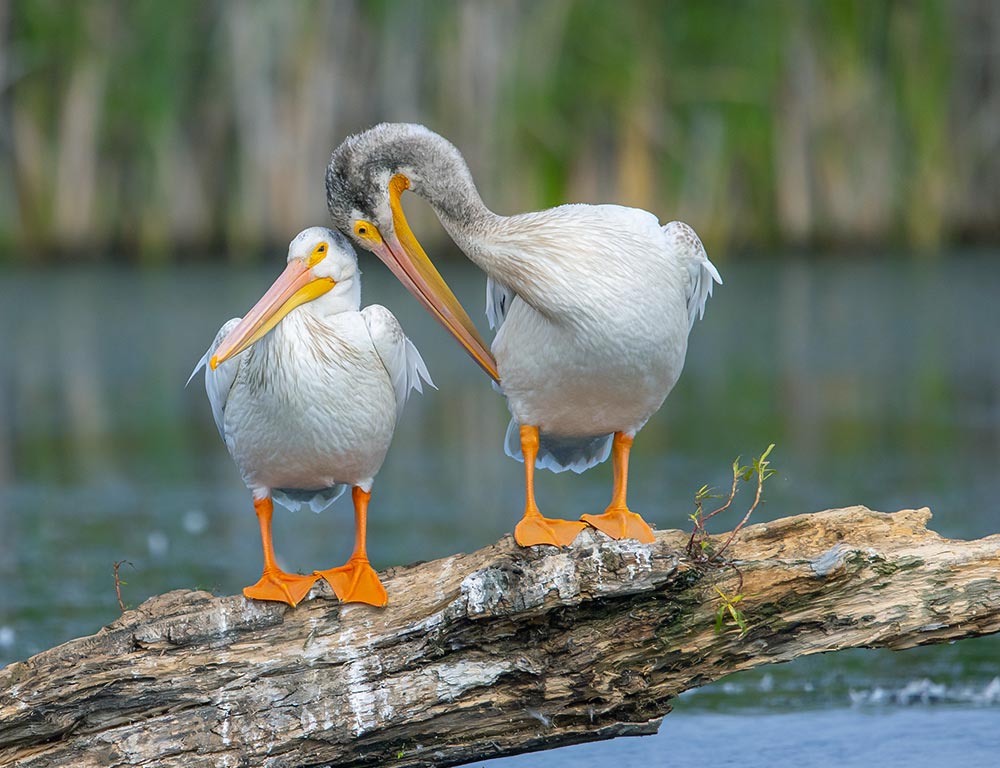
Pelicans in Wisconsin, particularly the American White Pelican, exhibit several common features that make them distinctive and fascinating. Understanding these characteristics can enhance the appreciation of these majestic birds:
Distinctive Appearance
American White Pelicans are large birds with wingspan reaching up to nine feet. They have a striking appearance with white plumage, contrasting black flight feathers, and a distinctive long bill with a prominent throat pouch.
Social Behavior
Pelicans are highly social birds, often seen in large groups during migration. Their communal nature is evident in their synchronized flight patterns and cooperative feeding behaviour, where they work together to corral and catch fish.
Migratory Patterns
While not permanent residents in Wisconsin, American White Pelicans are known for their impressive long-distance migrations.
They travel between their breeding grounds in the northern United States and Canada to wintering areas in the southern United States and Mexico.
Habitat Preferences
Pelicans are commonly found in freshwater habitats such as lakes, marshes, and rivers. In Wisconsin, they are often spotted near large bodies of water, where they engage in fishing and foraging activities.
Distinct Hunting Technique
Pelicans employ a unique feeding strategy known as “cooperative fishing.”
They work together to drive fish into shallow water, then scoop them up in their expansive throat pouches. This technique is a captivating spectacle for observers.
Silent Flyers
Despite their size, pelicans are surprisingly graceful in flight. They soar effortlessly on thermal air currents with strong, steady wingbeats. While flying, they are relatively silent, adding to the serene atmosphere of their presence.
Breeding Colonies
During breeding, pelicans gather in colonies on islands or isolated shorelines. These colonies provide a safe environment for nesting and raising their young.
However, in Wisconsin, breeding activity is not as pronounced as in their northern breeding grounds.
Seasonal Presence
Pelicans are seasonal visitors to Wisconsin, with sightings typically occurring during spring and fall migrations. Observing their arrival and departure adds a temporal dimension to the birdwatching experience.
By recognizing these common features, Wisconsin bird enthusiasts and nature lovers can better appreciate American White Pelicans’ unique characteristics and behaviours when encountering them in the state’s diverse ecosystems.
4. Pelicans in Wisconsin
In the diverse avian landscape of Wisconsin, two distinct pelican species stand out – the American White Pelican and the Spot-billed Pelican.
Each with its unique characteristics, these waterbirds contribute to the rich tapestry of wildlife in their respective regions. Let’s delve into the specifics of each species.
1. American White Pelican
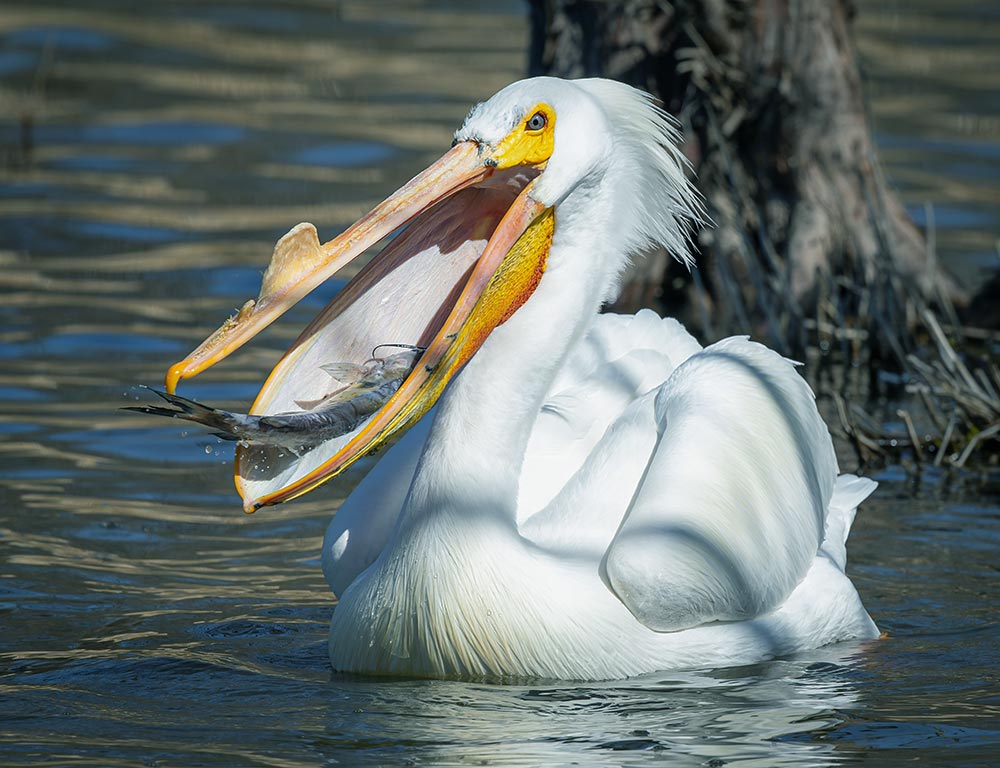
- Scientific Name: Pelecanus erythrorhynchos
- Category: Waterbird, Pelican
- Population: Widespread in North America, varying seasonally
- Life Span: Around 10-25 years
- Size: Wingspan of 8 to 9 feet
- Weight: Approximately 10-20 pounds
- Food: Primarily fish, foraged through cooperative hunting
The American White Pelican, a seasonal visitor to Wisconsin, boasts stunning white plumage and an impressive wingspan.
These sociable birds are known for their cooperative fishing techniques, working harmoniously to corral and catch fish. During the breeding season, colonies on islands showcase their strong social bonds.
American White Pelicans gracefully navigate Wisconsin’s skies during migrations despite their size, providing awe-inspiring sights over lakes and rivers.
2. Spot-billed Pelican
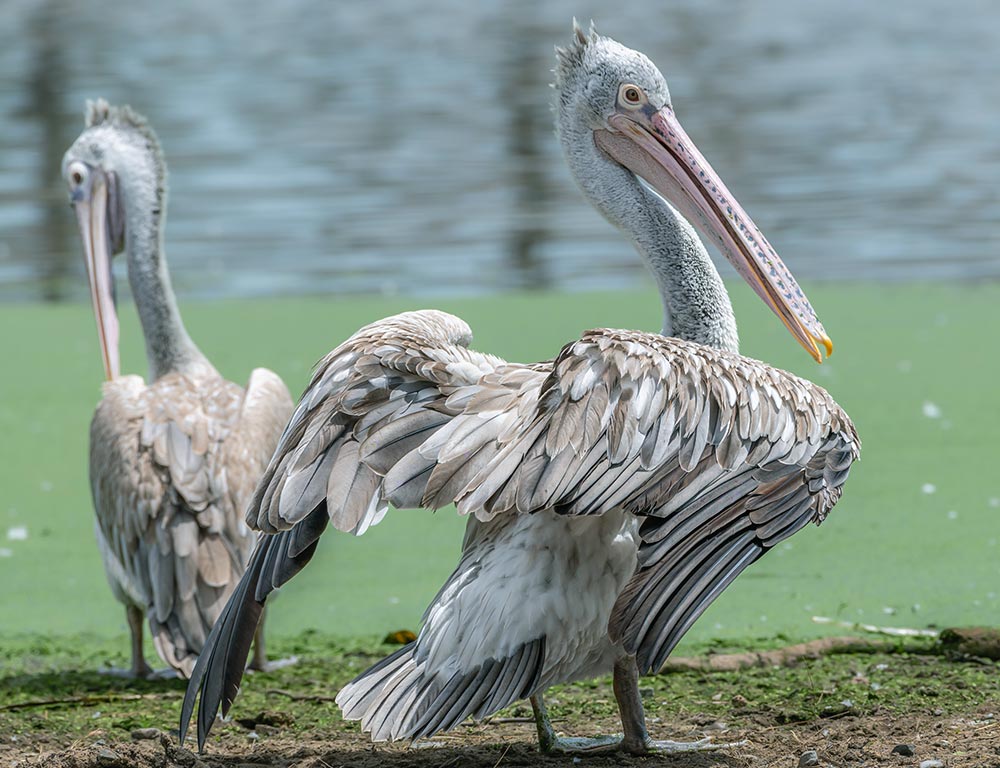
- Scientific Name: Pelecanus philippensis
- Category: Waterbird, Pelican
- Population: Scattered populations in South and Southeast Asia
- Life Span: Up to 25 years
- Size: Wingspan of around 8 feet
- Weight: Typically 10-12 pounds
- Food: Mainly fish, occasionally crustaceans and amphibians
In South and Southeast Asia, the Spot-billed Pelican graces wetland habitats with its distinctive spotted bill and striking plumage. While not native to Wisconsin, their scattered populations make them an intriguing species.
They exhibit cooperative hunting behaviours and adeptly use their bills to scoop up fish. Breeding colonies established in trees underscore their adaptability.
Despite facing habitat threats, the Spot-billed Pelican’s resilience emphasizes the need for conservation efforts for these remarkable birds.
3. Brown Pelican
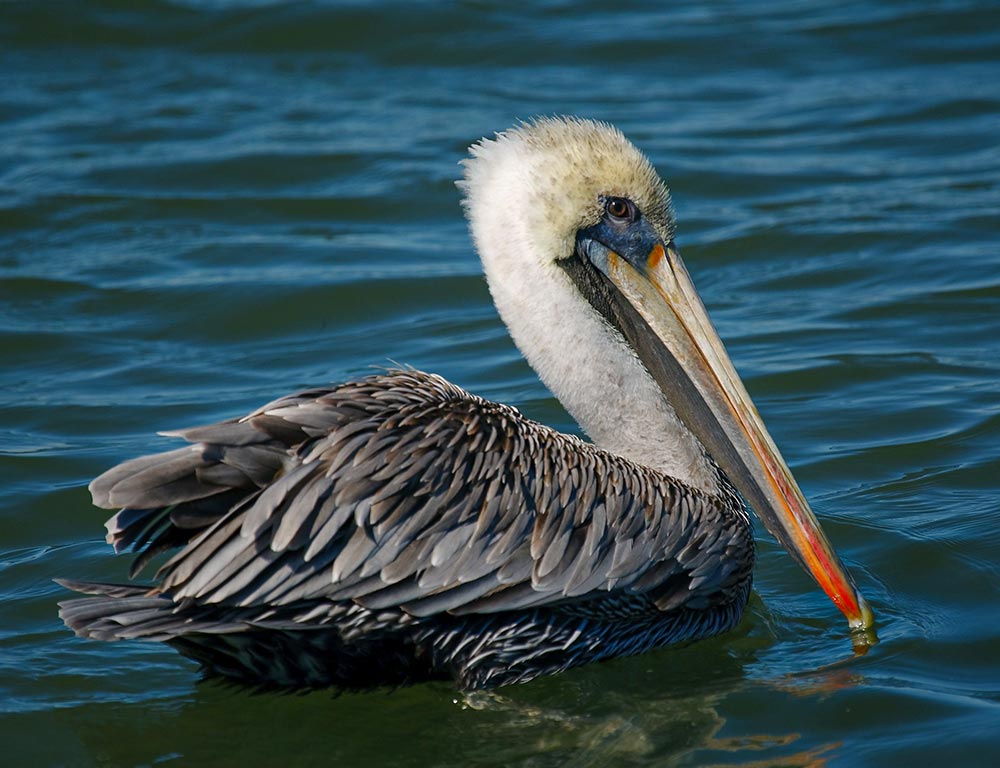
- Scientific Name: Pelecanus occidentalis
- Category: Waterbird, Pelican
- Population: Coastal regions of North and South America
- Life Span: Around 10-25 years
- Size: Wingspan ranging from 6 to 8 feet
- Weight: Typically 6-12 pounds
- Food: Primarily fish, utilizing plunge-diving techniques
The Brown Pelican, a coastal inhabitant of North and South America, is renowned for its distinctive brown plumage and impressive plunge-diving abilities.
With a unique hunting strategy, these pelicans spot fish from the air and plunge into the water bill-first to capture their prey.
Coastal areas, such as those in the Gulf of Mexico, are key regions for observing Brown Pelicans in their natural habitat. Their striking appearance and acrobatic fishing techniques make them a charismatic species along the shores.
4. Great White Pelican
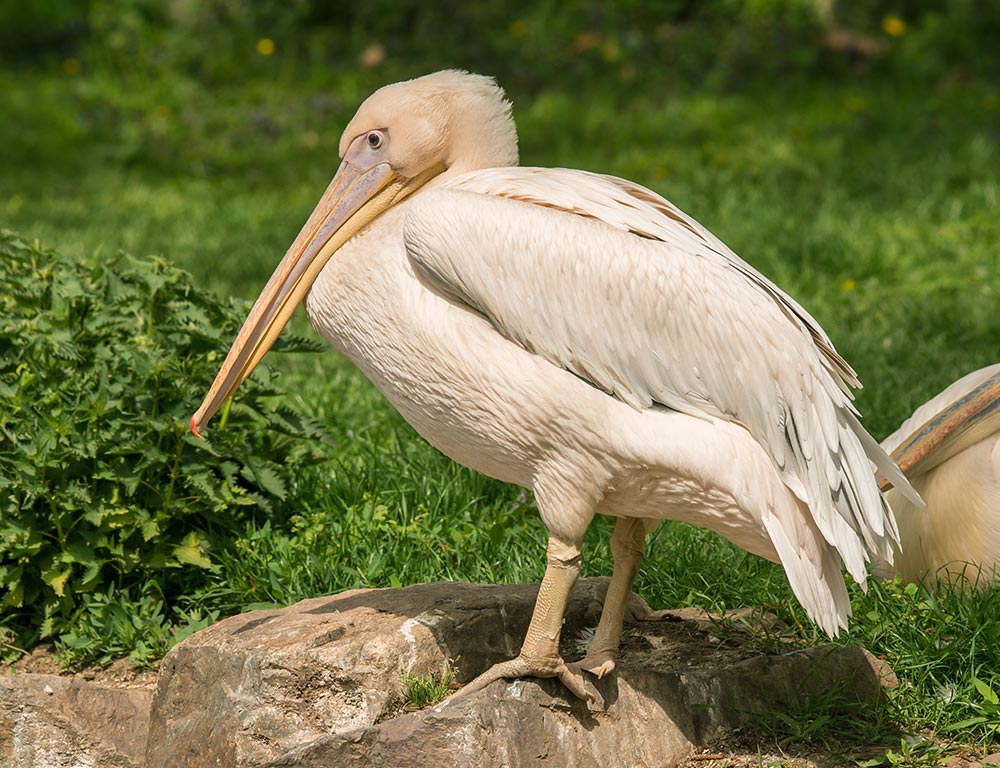
- Scientific Name: Pelecanus onocrotalus
- Category: Waterbird, Pelican
- Population: Widespread in Europe, Asia, and Africa
- Life Span: Around 25 years
- Size: Among the largest flying birds, with a wingspan exceeding 9 feet
- Weight: Typically 11-15 pounds
Food: Varied diet, including fish, amphibians, and small mammals
The majestic Great White Pelican, a resident of Europe, Asia, and Africa, commands attention with its impressive size and distinctive white plumage.
Thriving in both freshwater and coastal habitats, these pelicans showcase versatility in their diet, encompassing fish, amphibians, and small mammals.
Recognizable by their massive wingspan, Great White Pelicans often engage in synchronized group fishing, creating breathtaking spectacles for onlookers.
Their presence in Wisconsin might be rare, but their global prominence emphasizes their significance in the broader context of pelican diversity.
Where in Wisconsin is it good to watch the Pelicans?
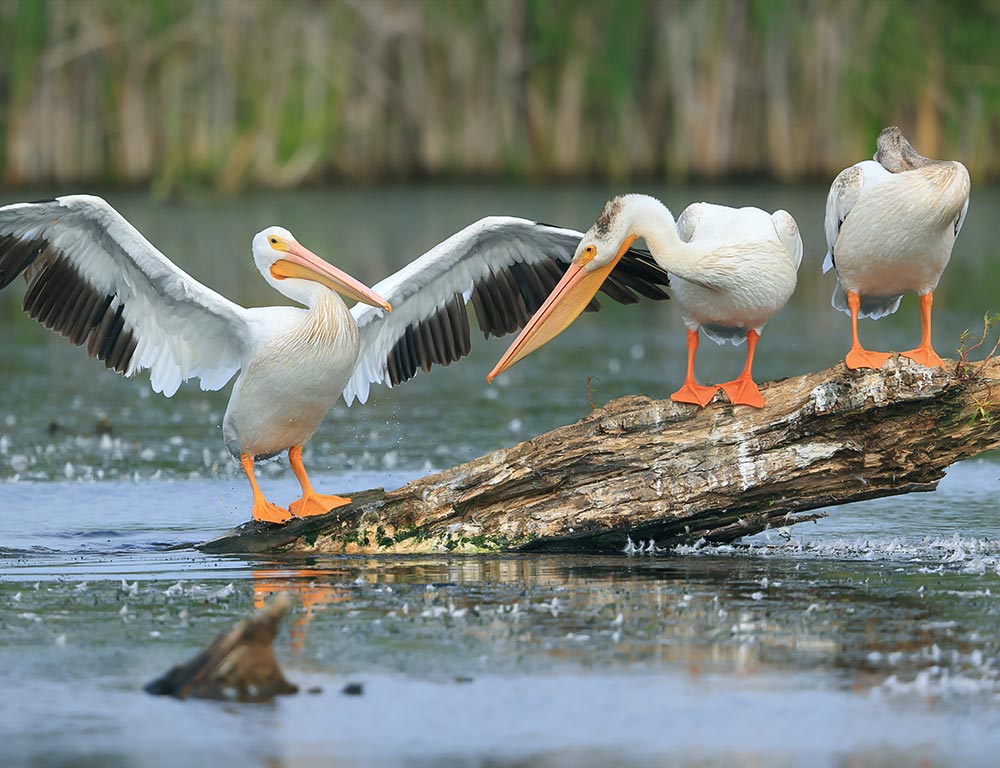
Observing American White Pelicans in Wisconsin can be a rewarding experience, as these majestic birds occasionally grace the state’s water bodies during their migratory journeys.
To enhance your chances of witnessing these elegant creatures, consider exploring the following locations known for attracting pelicans:
Horicon Marsh Wildlife Area
Nestled in Dodge County, Horicon Marsh is a haven for birdwatchers. The expansive wetlands provide pelicans an ideal habitat, especially during migration.
Boardwalks and observation towers offer vantage points for observing pelicans in their natural environment.
Upper Mississippi River
The Upper Mississippi River, bordering western Wisconsin, is a vital migration corridor. Look for sandbars and shallow waters along the riverbanks, where pelicans often gather for feeding.
Boat tours or riverside parks in areas like Prairie du Chien can offer excellent views.
Lake Michigan Shoreline
During migration, pelicans may make stops along the shores of Lake Michigan. Explore coastal areas such as Milwaukee, Sheboygan, or Manitowoc, where the expansive waters provide a backdrop for pelican sightings.
Chequamegon Bay
Up in northern Wisconsin, Chequamegon Bay offers a unique setting for pelican observations. The bay’s diverse ecosystem attracts various bird species, and pelicans may be spotted near the Apostle Islands or in the bay itself.
Pewaukee Lake
Pewaukee Lake attracts waterfowl, including pelicans, in southeastern Wisconsin. The calm waters and accessible shoreline make it an appealing spot for birdwatching enthusiasts.
Crex Meadows Wildlife Area
Located in Burnett County, Crex Meadows is a vast wildlife area with marshes and open water. The diverse habitats here make it a potential stopover for pelicans during migration. Explore the designated observation areas for optimal views.
When planning a pelican-watching excursion, remember the seasonal migrations, with spring and fall being peak times.
Additionally, check with local birdwatching groups, nature centres, or online birding communities for real-time updates on pelican sightings and the best locations to observe these magnificent birds in Wisconsin.
Wrapping Up
The occasional presence of American White Pelicans in Wisconsin adds a touch of enchantment to the state’s natural beauty.
With their impressive wingspans and elegant flight, these majestic birds create moments of awe for those fortunate enough to witness them.
While not permanent residents, the pelicans’ migratory visits contribute to the rich tapestry of Wisconsin’s diverse wildlife.
Their unexpected appearances in lakes and waterways serve as a reminder of the interconnectedness of ecosystems and the dynamic nature of the natural world.
As Wisconsin continues to be a haven for bird enthusiasts and nature lovers, the allure of pelican sightings adds a unique and delightful dimension to the state’s appeal.